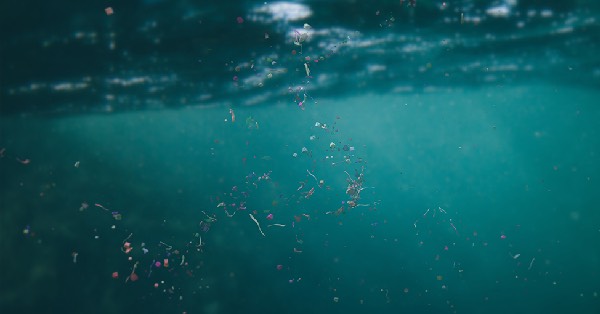DNV, in collaboration with the Norwegian Geotechnical Institute, finds plastic materials across all marine sediment and animal samples in Norwegian fjords and offshore areas
Human activity globally generates nearly 370 million tons of plastic every year, with production rates forecasted to keep on increasing in the future – despite a marginal slowdown during the COVID-19 pandemic. In Norway, every citizen disposes on average more than 100kg of plastic annually.
A significant part of microplastic pollution in aquatic environments originates from factories, discharged waste, and the weathering and loss of plastic equipment used in aquaculture, shipping and the oil and gas industry. In Norway, the major sources of plastic detected on beaches are packaging and consumer products, such as plastic bags and drinking bottles, and materials from the aquaculture industry, such as fishing nets and ropes.
In recent years, scrutiny has increased on microplastics, which are now found in all parts of the world’s oceans – including the seafloor, sea ice and biota –, and may pose a threat to the sensitive benthic ecosystems. Their negative effects have been documented through findings in dead marine mammals and birds, and rising concerns that these microplastics may affect human health through the food chain have been voiced, notably following the discovery of microplastics in human blood and lung tissue for the first time this year. This has prompted an increasing urge to identify and minimize sources of marine pollution.
DNV’s sample collection along the Norwegian coastline, across a wide geographical area at sea and in the innermost fjord systems, was facilitated by the group’s broad area of activity as an environmental consultant with extensive fieldwork throughout the region.

“This is the first time that comparisons of microplastic content between fjord systems and offshore areas have been made in this way, said Øyvind Fjukmoen, project leader for DNV; one animal species in particular was used in the comparisons; a fragile, small bristle worm no larger than a few millimetres. We also sampled the surface layer of sediment on the seabed.”
In some areas of the Oslo Fjord, researchers found up to 14,000 microplastic particles per kilo of dry material, and as many as 30 microplastic fragments per individual seaworm – between 5-10 times as much as would be expected offshore.
Mari Engvig Løseth, from the Norwegian Geotechnical Institute, an independent international centre for research and consultancy in engineering-related geosciences, said: “Our results show that there are significantly higher concentrations of microplastics in coastal sediments, compared to offshore areas. There are significantly more and varied sources along the coast that can release microplastics to the environment – from the use and wear of plastic structures and products to discharges from treatment plants. The most common types of plastic observed in both sediments and bristle worms were polyethylene, polypropylene, nylon and chlorinated polyethylene.”

“Driven by our purpose of safeguarding life, property, and the environment, we at DNV are proud to lead projects like this one, which increase knowledge and attention on the increasingly pervading coastal and marine plastic pollution, said Prajeev Rasiah, Executive Vice President and Regional Director for Northern Europe, Energy Systems at DNV. We are glad to put our resources and expertise to use in the pursuit of ocean preservation; ultimately, the environmental and health impacts of microplastics are still largely unknown and, as we anticipate their presence to further increase, this monitoring exercise is necessary, and may be relevant to repeat so that we can draw from a solid set of data” ended Rasiah.









































